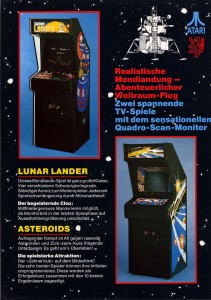Video Games
Brown Box Demonstrated to Magnavox VP

Ralph Baer demonstrates the video game system he invented, simply called the “Brown Box”, to Magnavox engineering, production, and marketing management in Ft Wayne, IN. Previously Baer had demoed the Brown Box to many other TV manufacturers including RCA, GE, Zenith, Sylvania, and Magnavox themselves without any licensing agreements. A licensing agreement with RCA was written but cancelled in March of that year. It was this demo with Magnavox’s VP of Marketing present that would eventually lead to creation of the first home video game system, the Magnavox Odyssey, and the birth of the video game industry.
Nintendo Releases Famicom

Nintendo releases their Famicom system, short for “Family Computer,” in Japan. The Famicom would be slightly modified with a copy protection system, a redesigned chassis, a front loading cartridge mechanism, and released in North America just over two years later as the Nintendo Entertainment System (NES). The Famicom/NES system would become one of the most influential game systems ever produced, making Nintendo the premier company in the video game industry during the late 1980’s and early 1990’s, picking up the mantle where Atari left off.
Not-So Final Fantasy
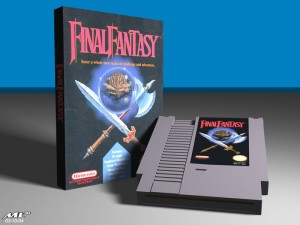
Nintendo releases the original Final Fantasy video game for its Nintendo Entertainment System in North America. One of the most successful role-playing games for the NES, Final Fantasy helped to popularize the genre and has gone on to spawn one of the most well-known RPG franchises in history. Ironically, the game’s creator, Hironobu Sakaguchi, thought the game would be his last one, hence the “final” in Final Fantasy. Had the game not sold well, he would have quit making games and gone back to college. So much for that.
Donkey Kong and Mario’s Birthday
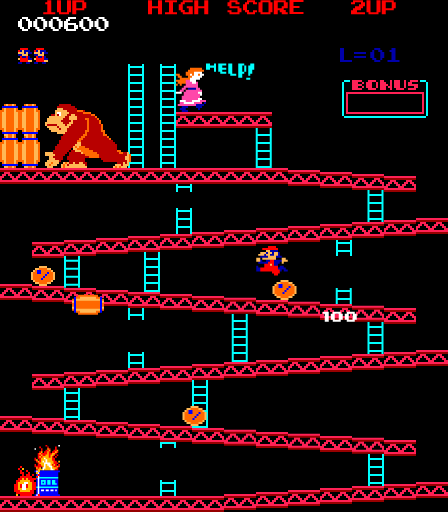
The game that launched two of the most famous characters in video game history is released for sale. Donkey Kong was created by Nintendo, a Japanese playing card and toy company turned fledgling video game developer, who was trying to create a hit game for the North American market. Unable at the time to acquire a license to create a video game based on the Popeye character, Nintendo decides to create a game mirroring the characteristics and rivalry of Popeye and Bluto. Donkey Kong is named after the game’s villain, a pet gorilla gone rogue. The game’s hero is originally called Jumpman, but is retroactively renamed Mario once the game becomes popular and Nintendo decides to use the character in future games.
Due to the similarity between Donkey Kong and King Kong, Universal Studios sued Nintendo claiming Donkey Kong violated their trademark. Kong, however, is common Japanese slang for gorilla. The lawsuit was ruled in favor of Nintendo. The success of Donkey Kong helped Nintendo become one of the dominant companies in the video game market.
All Hail Atari
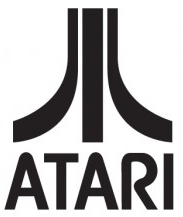 June 27, 1972
June 27, 1972
The iconic video game company, Atari, is founded by Nolan Bushnell and Ted Dabney. Their first video game, Pong, was the first commercially successful video game and led to the start of the video game industry. In 1977, Atari’s Video Computer System (known as the VCS and later the Atari 2600) popularized the home video game market. Before the video game crash of 1983, Atari was the fastest growing company in the history of the United States at the time, and the brand was synonymous with video games.
All those who have enjoyed video games, whether we started playing in the 70’s, 80’s, or just in the last few years, should take a moment to reflect on the company that single-handedly spawned the video game industries we so cherish. I propose that the best way to do that is to … well … stop what you’re doing and play a video game right now!
First Two Video Games Copyrighted
Atari’s Asteroids and Lunar Lander become the first two video games to be registered with the US Copyright Office. This was an important step in the evolution of intellectual property rights for the emerging video game industry.
On a side note, I could only find one image that had both games – can anyone translate the German?
Tetris is Born
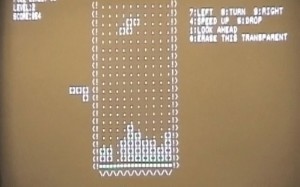
Alexey Pajitnov first releases the game Tetris in the USSR. Tetris will become one of the most popular puzzle video games of all time. Originally programmed for a Soviet-built Elektronika 60 computer, the game was soon ported to the IBM PC, where it spread quickly throughout Moscow and the rest of the USSR. Eventually making its way to Hungary, from there the game was discovered and questionable attempts to license it for sale by various software companies were made. By 1989, half a dozen different companies claimed rights to create and distribute the Tetris software for home computers, game consoles, and handheld systems. Several highly complex and drawn out legal battles ensued in the following years to settle who had the rightful licenses and authority to sell the Tetris game in various formats and countries around the world. Ironically, Pajitnov himself was not able to make any money on Tetris for years because as an employee for the Soviet government, the Soviet State ended up owning the rights. It was only when the rights reverted from the old Soviet government to Pajitnov and he moved to the US in 1996 that he was able to form a company and collect royalties. Then he went on to work for Microsoft … trading one oppressive regime for another it would seem!
All Your Base Are Belong To Us
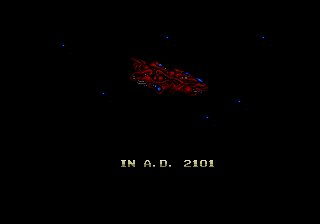
Sega releases the video game Zero Wing for the Sega Mega Drive system in Europe. The game was never released in North America, and was relatively unknown until years later when the poorly translated opening scene was popularized on the Internet. The most famous mistranslation is the phrase “All your base are belong to us,” which has become a very popular Internet meme.
Happy Birthday, Pac-Man!
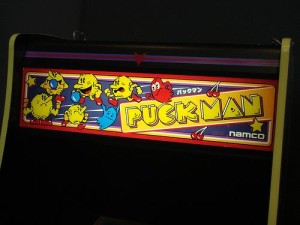
Puck-Man was the original name for Pac-Man
May 22, 1980
Namco’s upcoming video game “Puck-Man” is location tested in a movie theater complex in Japan. After favorable initial testing, the game difficulty is slightly tweaked along with renaming the game to “Pac-Man”. Midway, Namco’s U.S. distributor, thought that vandals would alter the letter “P” to an “F”. While the game was not officially released in Japan until July of that year (October 10th in the US), the creators of the game consider May 22 to be Pac-Man’s birthday because it was the first time the game was shown to the general public.
One of the little known facts about Pac-Man is that it was specifically developed to be popular with women. Most video games of that time had a war or sports theme to them and women were generally not interested in those games. Pac-Mac would be the first game popular with both men and women and was the first video game to become a social phenomenon. Pac-Mac generated over $2.5 billion by the 1990’s, becoming one of the highest grossing video games of all time. I’m not sure how many of you remember “Pac-Mac Fever”, but Pac-Mac was the first video game to break into the mainstream, forever changing our culture and society.
Wolfenstein 3D Blasts Onto Scene
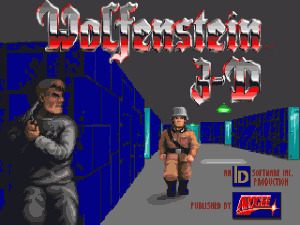
id Software Inc. releases the game Wolfenstein 3D, the original first person shooter game for DOS computers. While it was technically not the first FPS in video game history, Wolfenstein 3D was the game that definitively popularized the genre. Using the shareware model to freely distribute the first of three episodes with the ability to purchase the next two episodes, the game became an instant success, selling 200,000 copies in the first year. The success of Wolfenstein 3D made id Software a household name in the gaming world. They followed up in the next year with the massively popular Doom, which cemented the first person shooter gaming genre and the rest is history.
In addition to being credited with launching the first person shooter genre, Wolfenstein 3D is also widely regarded as proving the viability of and popularizing the shareware distribution model. The game was ported to many different platforms over the years and is still available for purchase to play today.

